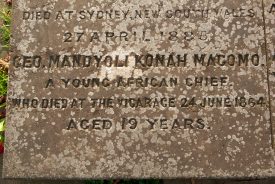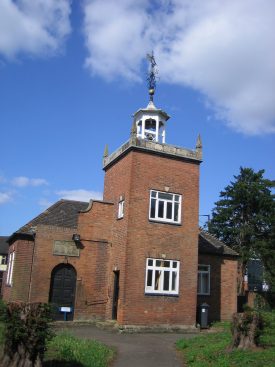In the middle of Nuneaton parish churchyard lies a substantial flat stone memorial to the mid 19th Century clergyman, Canon Robert Savage. The tombstone, like so many in our graveyards, reveals a wide range of historical information, recording significant detail about various members of the Savage family. But what is intriguing is a reference to an African Chief, George Mandyoli Konah Macomo. It records that he died at the vicarage in June 1864 aged 19. Why had he come to Nuneaton? Why had he died so young? Why did he merit a place in the family tomb?
Endless possibilities
Possibilities seemed endless and local oral folklore regarding his death burst with invention. One of the most reasonable theories was that he had failed to cope with the severe mid-Victorian winters. One of the more inventive had him chasing vandals off church property only for his life to end dramatically when he fell off a wall and broke his neck. But there was not a shred of evidence for any of the possible explanations. It was time to investigate.
Attempting to answer the mystery takes us into 19th Century South African history. When investigating a matter such as this you have to be prepared to go where the evidence takes you. To fully understand what has gone on in Warwickshire historically often means leaving its boundaries, at least for a time. This is what we will do. But it will take us only one or two paragraphs to return to Nuneaton.
Not one chief, but two
There turned out to be not one chief but two. The scene is set in Cape Colony – later part of the Union of South Africa –in 1859. The English Governor of Cape Colony, Sir George Grey was anxious that the Xhosa tribes of the area, now controlled by the British, were converted to Christianity. He favoured integration and Christianisation of the native races rather than the route favoured by many others – military suppression and control. He believed that if you could convert tribal chiefs, or their children, general conversion would follow.
In March 1859 Sir George selected two such sons of chiefs, 16 year old Duke of Wellington Tsatzoe and Mandyoli Konah Maqoma ( Maqoma rather than Macomo is the correct spelling), just 14. Maquoma’s grandfather had been a native leader defending British attacks, trying to preserve his native lands from aggressive colonialists. But his sons, the fathers of the teenage boys, were more friendly towards the British as the use of the Duke of Wellington’s name proves! These two boys ended up in Nuneaton.










Comments
Add a comment about this page